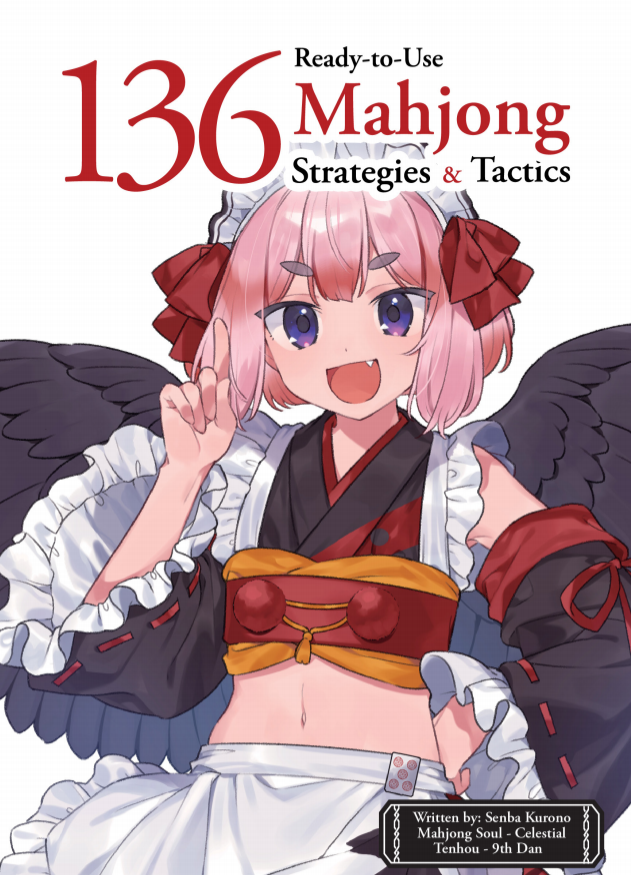What's So Great About Riichi Mahjong?
A gamble, a puzzle, and a negotiation
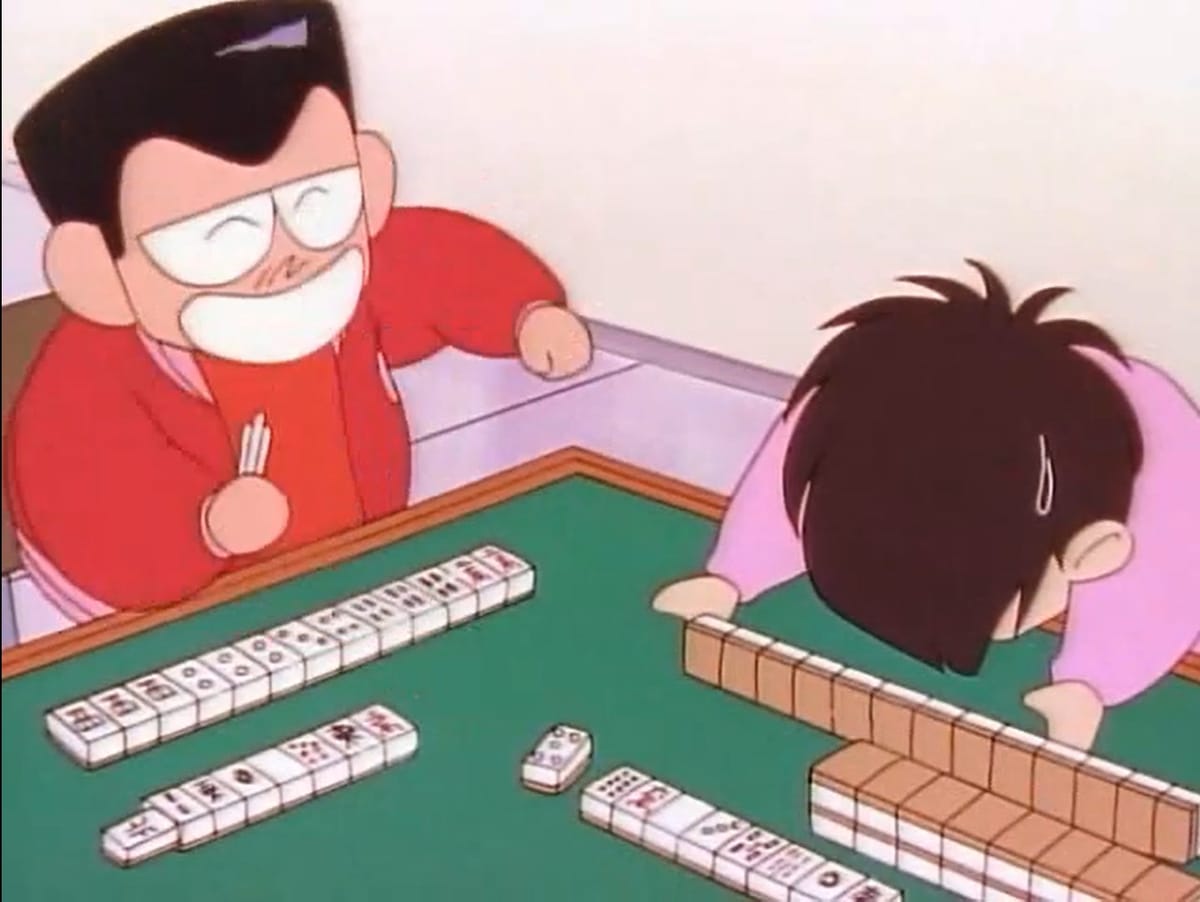
(Screenshots in this article are from Sega MJ1.)
You know, if I’d taken up poker a decade ago instead of riichi mahjong, I might not have to ask you guys for your patronage to run a blog like this.
But I love mahjong, man. I really love it. Riichi mahjong has so much good stuff. First, it’s a gamble. Second, it’s a puzzle. Third, it’s a negotiation between you and three other people.
Compared to fighting games, I’d say I’m on and off with mahjong. But it’s been no less rewarding and challenging. Like the best games, it has taught me.
The gamble
If you prefer deterministic games with no element of random chance at all— like say chess, or most fighting games— I think dipping your toe into the other end of the pool with a gambling game or a randomly-generated roguelike can really broaden your point of view. Or give you a heart attack; don’t blame me.
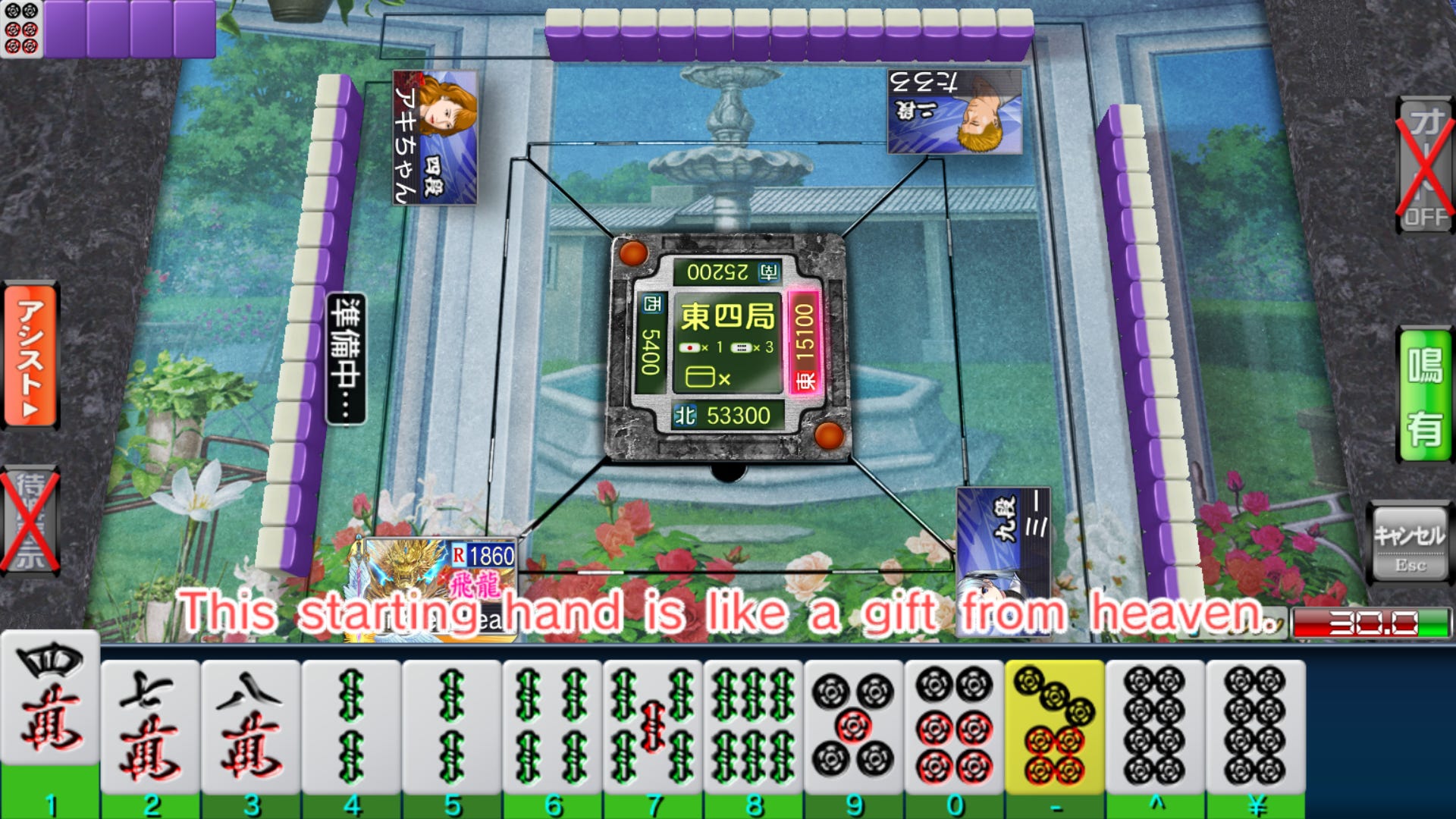
Mahjong is a race to assemble a valid hand before anyone else. But depending on the luck of the draw, players don’t necessarily start in the same place. I could start six tiles away from a finished hand and you could start needing only one.
It’s even possible— though incredibly statistically unlikely— to be dealt a completed hand from the start, thus awarding you the maximum amount of points and possibly winning you the whole match right there. The game’s biggest possible win involves you not doing anything; give that some thought.2
You can do everything right in this game and still lose miserably. You can play terribly and win spectacularly. Luck governs this game, not player skill. Skillful mahjong players are those with the insight to see the opportunities that the draw gives them. They don’t win all the time, and they don’t always beat players less skilled than they are: they just win more often.
How unfair! You may think. But the game was never about being equitable. It’s a gamble. Much like the universe itself, it does not owe you anything. Rather than eliminating this element, we embrace it.
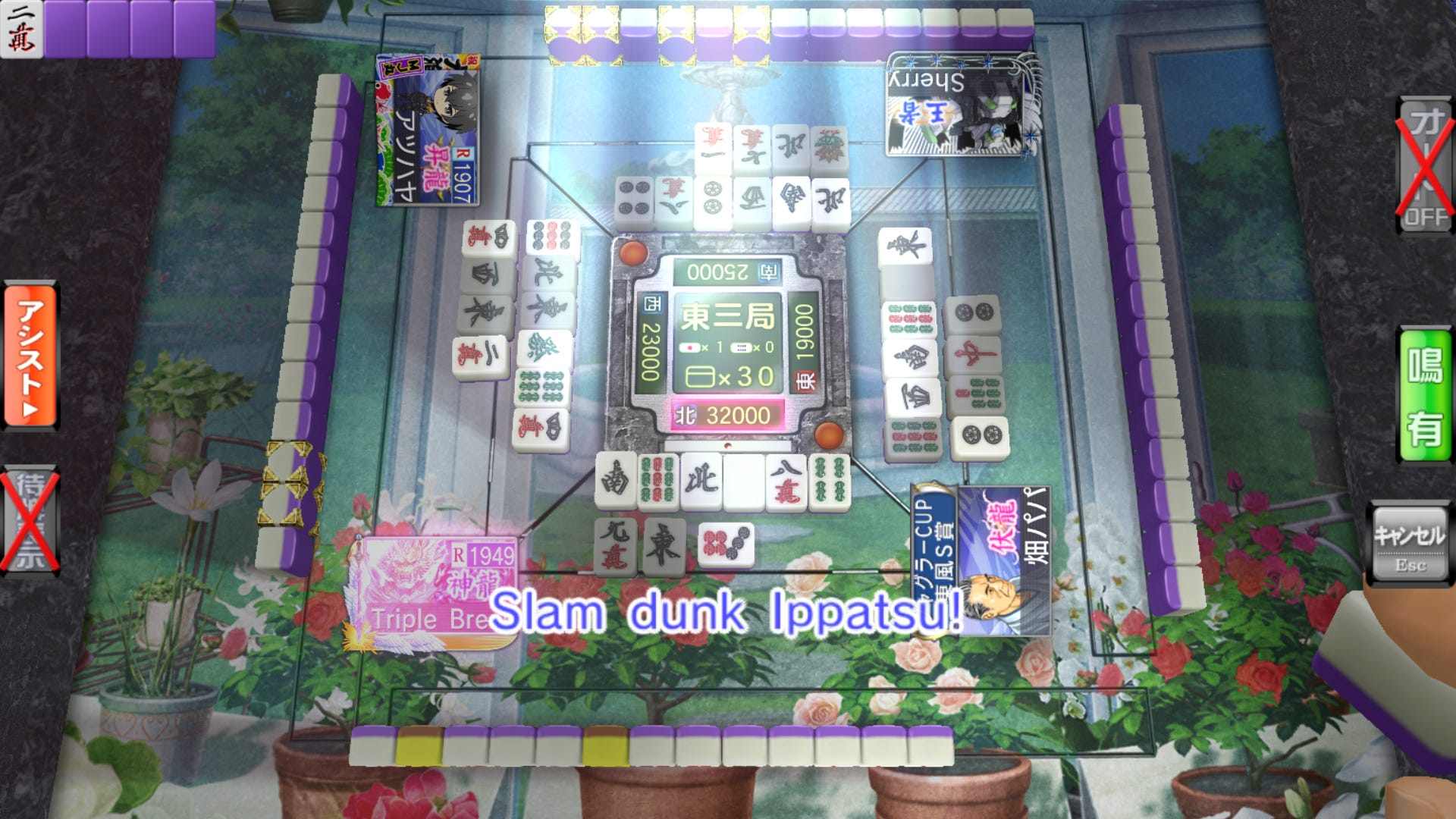
And I think embracing chaos is the part that helps us in life. Just as you will have absurd runs of good luck in mahjong, you will also get hit by lightning. Sometimes twice, or three times. Even if you play it right. Get hit by lightning enough times and you learn not to take lightning strikes personally.
Because the tiles aren’t for or against you, no matter how much it feels that way. They just are. By randomly pulling from 136 tiles we simulate fate, and fate’s got nothing to do with you. That knowledge is freeing. Acknowledging an unfair universe makes it easier to get up when you fall.
The puzzle
Of course there are the tiles themselves; even people who don’t play the game find them nice to look at, and there is a beauty, as well, in the way they interlock and form shapes.
The puzzle is simply to arrange our fourteen tiles into four sets and a pair, tile by tile, with every draw throwing away the tile we need least. Since it’s a race to be first, it pays to know this puzzle better than the other players.
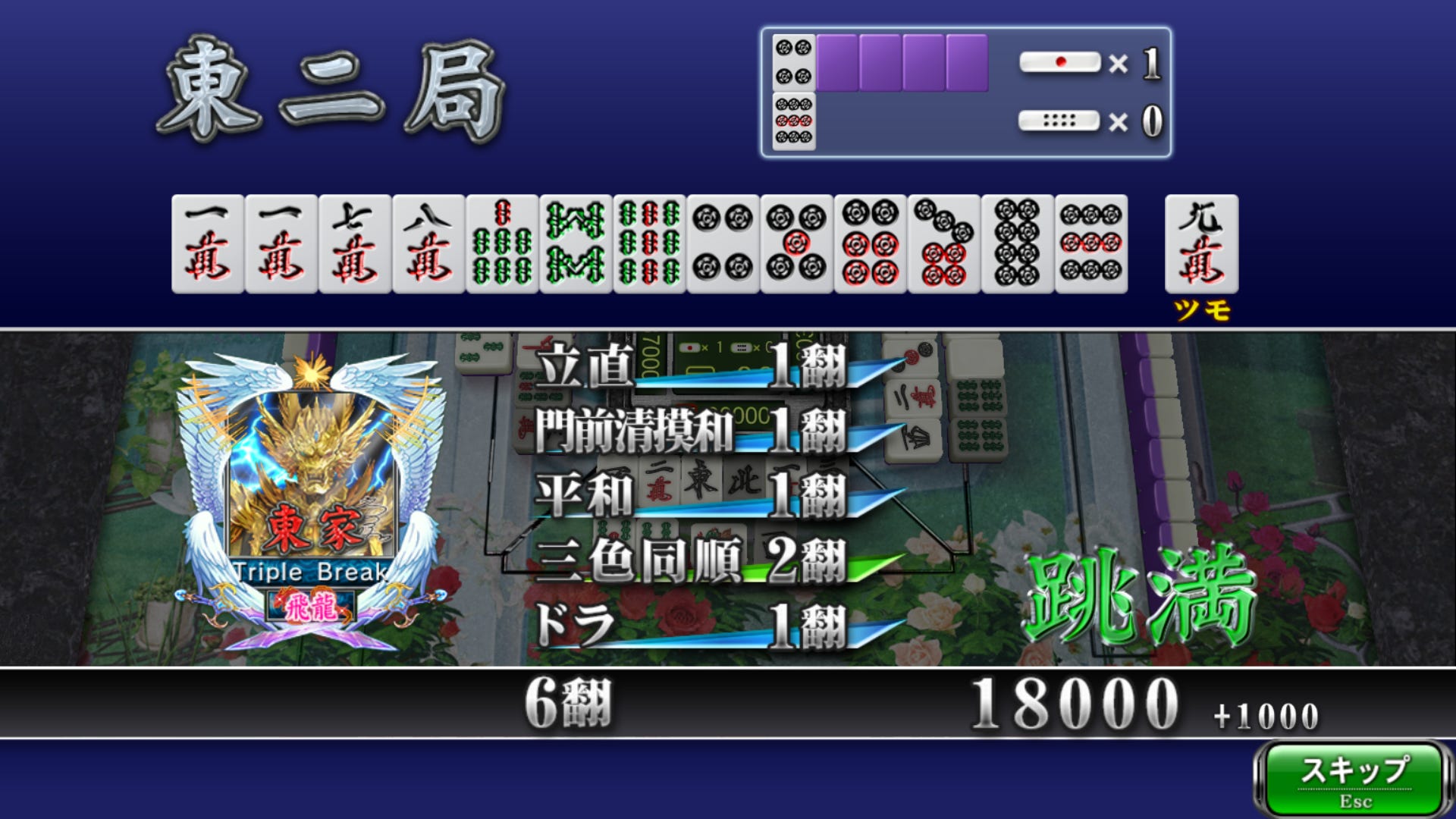
Players study the shapes, learn how to discard efficiently, which tiles are useless, which are strong, which ones only seem to be useless. We make the best use of the tiles we’re dealt, not so much the ones we’d like to be given. The more you play the game, the better your eye for the puzzle gets, and so it never stops being rewarding.
But unlike some of the other forms, there are a lot of rules and restrictions involved in building a hand. Riichi can be genuinely impenetrable to beginners: I know, I was one. But as you become competent and dive deeper, you start to see that the very rules and exceptions that give newbies trouble (pinfu, tanyao, yakuhai and furiten, to just name them all) are the very rules that give the game its form. It’s a different and worse game without them.
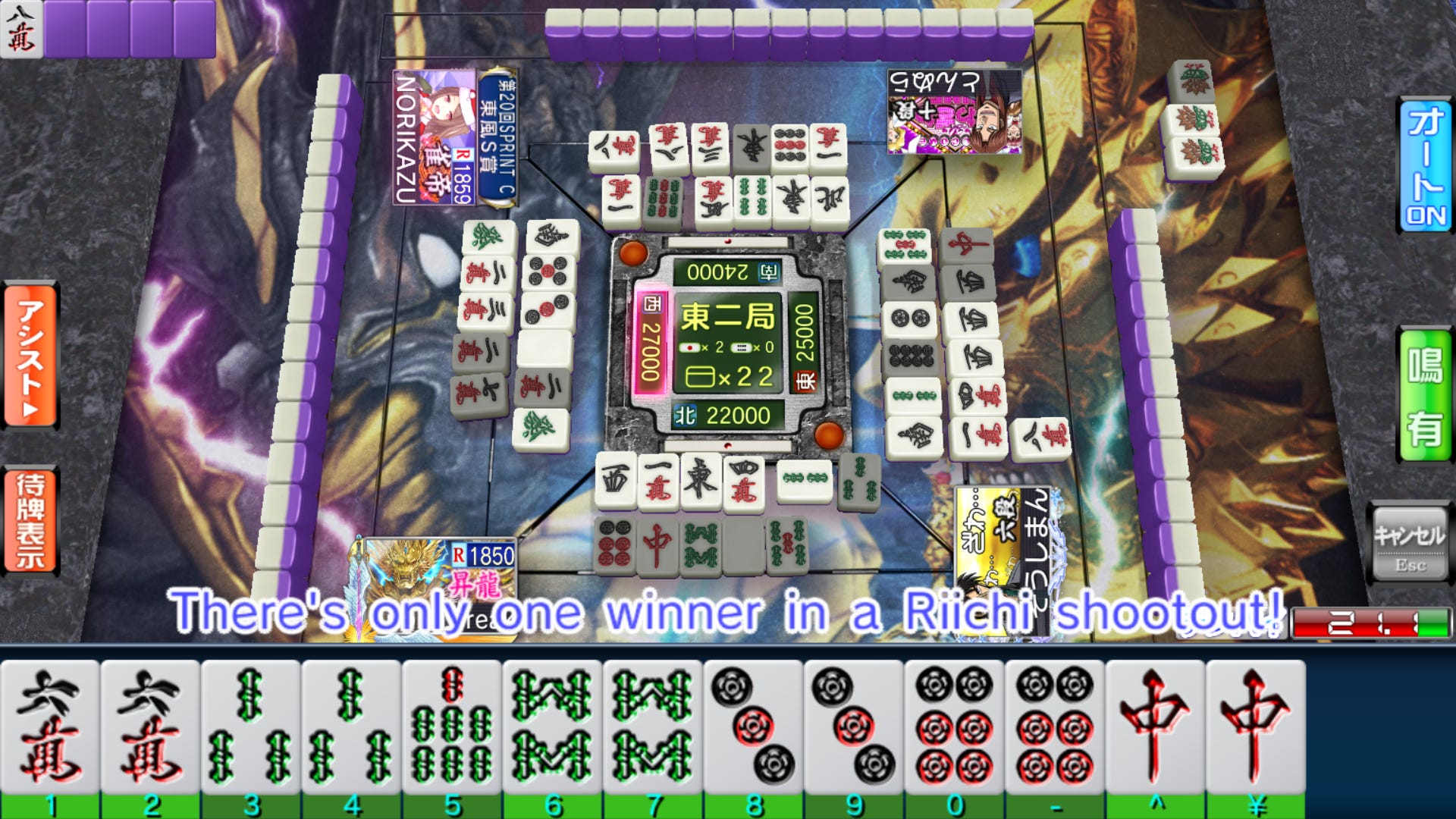
Once you have a grip on the puzzle of the tiles in front of you, there is the puzzle of the table. The table situation is always changing, and often your response needs to change accordingly. Who is throwing away what kinds of tiles? What hand could they be going for? Did your opponents already throw out your winning tile before you could claim it?
These factors and more form the greater puzzle— that of the whole table— which lies beyond the immediate puzzle of forming your hand. It’s a question to which the answer is ever-changing and elusive. And remember, just because you make the right move doesn’t mean you win. We can only manage our luck.
The negotiation
I’ve seen people say that due to its restrictions, riichi is a game of solitaire played between four people. Sometimes it is. Some matches you don’t get to play. Other matches the game plays for you.
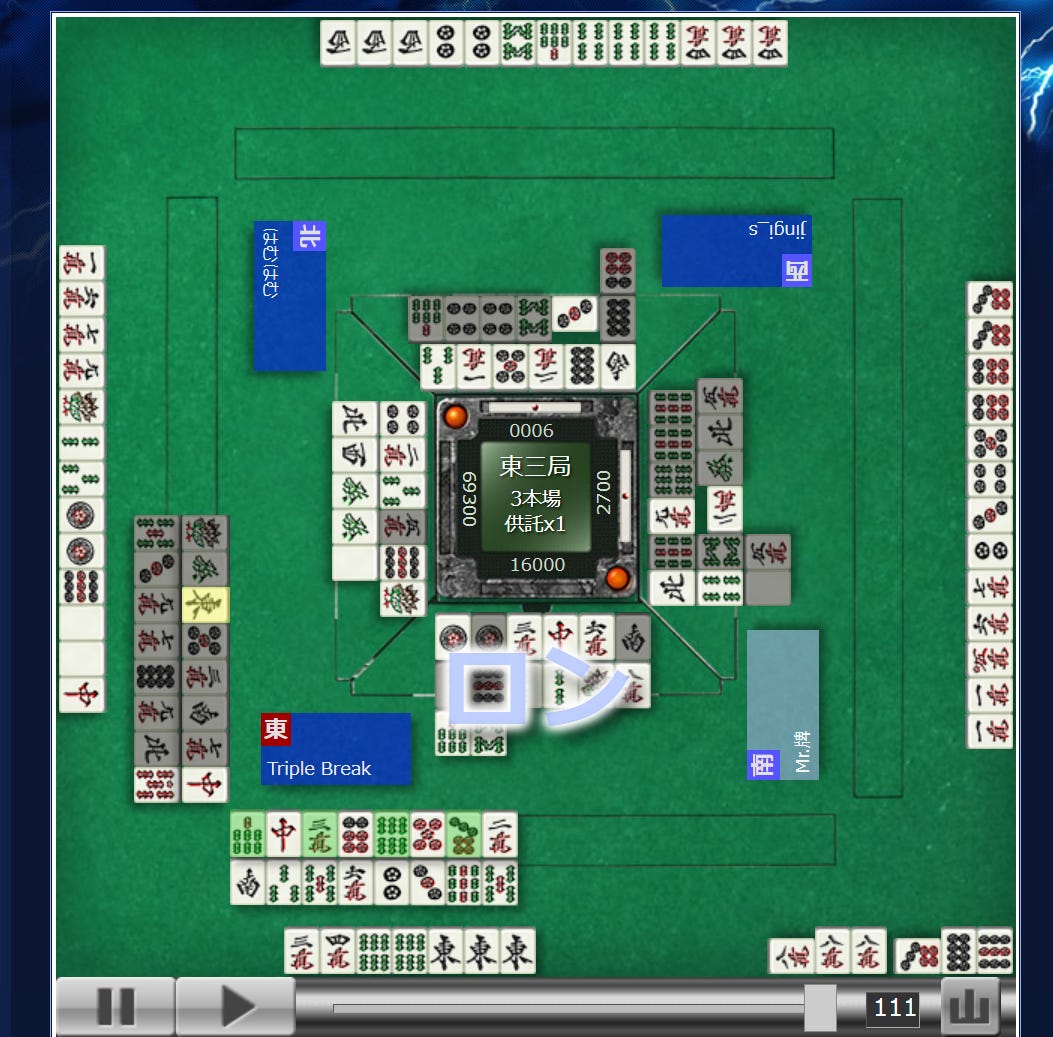
But in between the extreme cases, there is a negotiation going on. Whether players realize it or not, we communicate by way of our calls, the tiles we discard, and the tiles we don’t discard. The player who pays attention can turn that info into an advantage.
It isn’t possible to reliably deduce our opponent’s hand from their discards, but we can deduce what tiles they don’t need, and from that information form a fuzzy, uncertain picture of what they might need.
It’s an incomplete-information situation, and that info affects your choices. Do you disregard your opponents’ hands and press forward as quickly as possible? Do you cautiously attempt to deal around the tiles they need, making compromises on your own hand? Is their hand so potentially valuable— and your hand so lousy, or your potential discards so dangerous— that you simply fold? There are times for all three approaches.
Riichi isn’t a game where you can consistently hard-read your opponent: that is, pin down their intentions directly and counterattack. There are too many possibilities for that. (The elaborate mind games depicted in, say, Akagi are only slightly less magical than the super powers depicted in Saki.) But every so often, with an unusual wait or a misleading discard, you can make it feel like you did. And that’s tremendously satisfying.
My experience
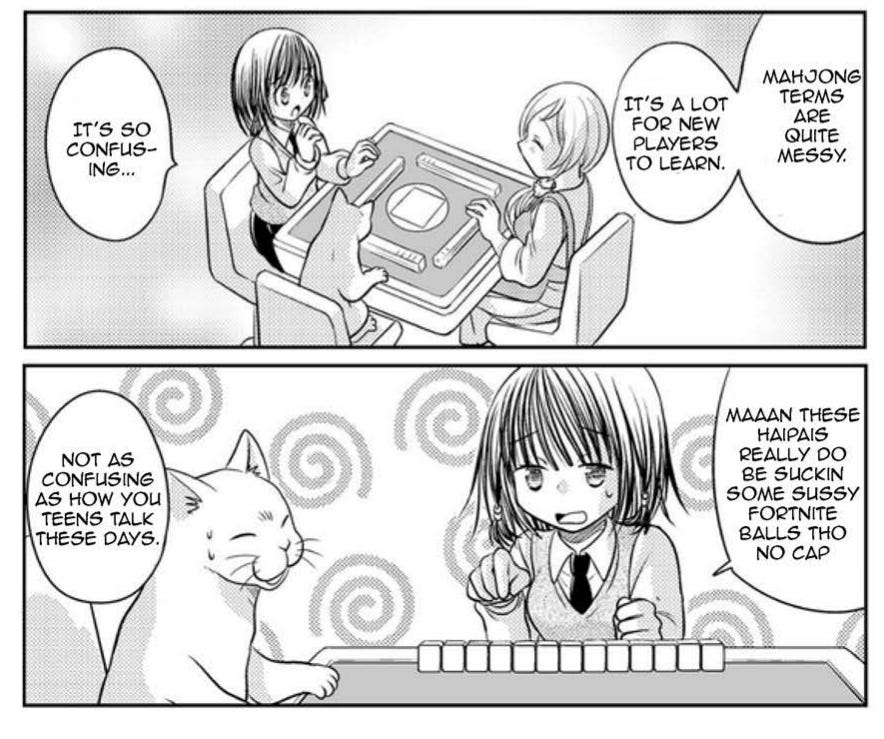
I’ve been playing since around the late 00s; my first inspiration was that I was playing Litchi in Blazblue and I wanted to know what the hell the character was yelling about all the time.3 There was very little English-language learning material at the time, so I banged my head against various home mahjong games as well as Tenhou. Eventually I figured out what the hell I was doing and moved up from a know-nothing to a beginner.4
By the time I was playing local in-person games and setting up my own games among friends, mahjong already had me firmly in its grasp. I even ran a mahjong panel at Otakon with my good friend SDS a couple of times.
I have progressed the same way I've progressed with everything else I’ve ever learned how to do: learn, play hard, reach a plateau, learn some more, have an inexplicable breakthrough, reach a plateau again. There is always some new realization that leads me to another breakthrough, and that’s what keeps the game exciting.
When I was mediocre, for example, I thought the game was about passively sitting there and waiting for good tiles to come in. I got bored of the game I thought I was playing, when the game I could have been playing was much more interesting than that. Since I’ve learned the power of calculated aggression, I’ve won a lot more, reached higher ranks, and had a lot more fun. You’ll never hit the top of this mountain.
If you get really into the game like I did, I strongly recommend reading some game theory; it’ll drastically improve your play. Start from Daina Chiba’s Riichi Book 1, work your way around, and try to balance the theoretical study with practical match experience. (Analyze your own replays, it goes a long way towards improving your habits and understanding your game!)
All together
Riichi mahjong scratches a lot of my gaming itches, and it has been doing so for over a decade. I like to compete, I like to gamble a little, and bad as I am at it— bad as I am at holding a poker face of any kind— I like to try and read people. If that particular mix appeals to you, maybe try mahjong. Just be warned that it may never let go.
Sega MJ is a free-to-play Japanese PC/mobile client that starts to require cash once you’ve been around for a while. It’s for people who like Sega arcade aesthetic circa AM2 (me) and people who don’t have the uninterrupted free time to play full East-South matches all day (me again). I don’t recommend it unless you have those specific needs. ↩
Technically, anally, “someone will write a pedantic reply about this”-y: A yakuman like tenhou/chihou (32000 points, 48000 for dealer) is not the highest-scoring possible hand in the game. In some scoring rules it’s possible to win two or more yakuman hands at once, so for example a triple yakuman (something like tenhou daisangen suu ankou) is possible. That being said, anyone who draws a tenhou/chihou is never going to forget it in their entire mahjong life. ↩
It all turned out to mean nothing; she was shouting random terms and it made no more sense when you understood the game. ↩
Today I would simply suggest you play Mahjong Soul. Though it’s a gacha game, Mahjong Soul offers the best onboarding experience for new players, with a simple tutorial and a big, largely casual player base. It wants you to learn: or, failing that, it wants you to spend hundreds of dollars spinning for an anime mahjong wife. ↩



